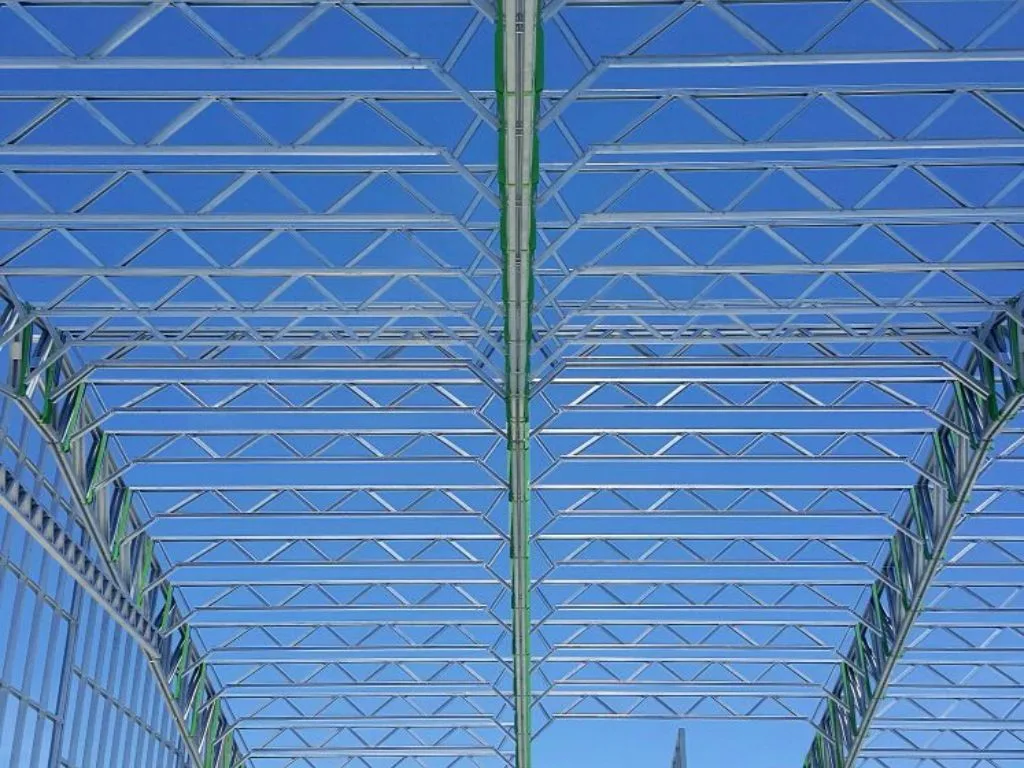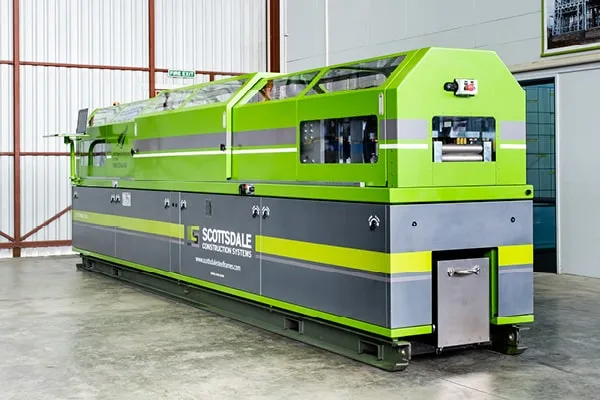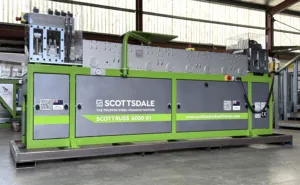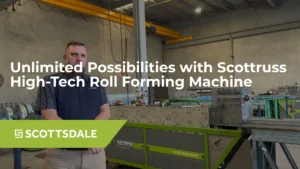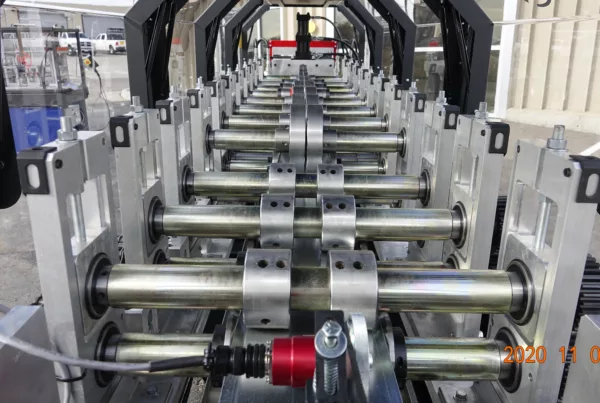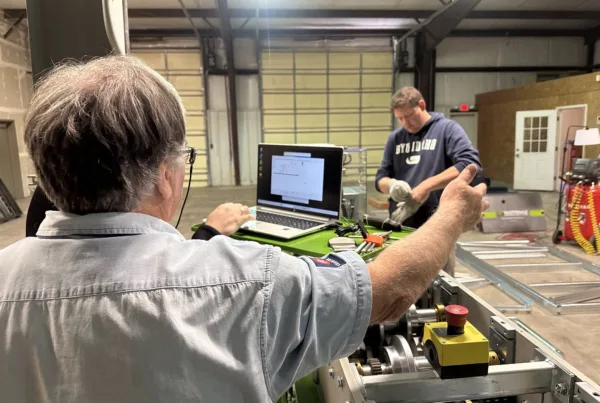In this article, we compare cold-formed steel floor trusses for optimal steel framing performance. Cold-formed steel has become one of the most efficient and sustainable materials in modern construction, especially when it comes to steel framing solutions. Within this sector, cold-formed steel trusses are a central component in roof and floor systems and can be manufactured using advanced roll forming machines. Two primary types dominate the industry: hat-section trusses and C-section trusses. Both profiles are widely used in different applications, and their performance is especially critical in cold-formed steel floor trusses. Understanding the advantages, trade-offs, and best uses for each truss type ensures stronger, lighter, and more economical buildings. Here, we explore the engineering study conducted on these trusses, highlight their differences, and explain how cold-formed steel trusses, whether hat-section or C-section, fit into today’s steel framing practices.
Introduction to Cold-Formed Steel Trusses
Cold-formed steel trusses are engineered assemblies designed to distribute loads efficiently across spans in roofs and floors. These trusses are manufactured from light-gauge steel coil using advanced roll forming technology. Within truss fabrication, two standard profiles, hat-section trusses and C-section trusses, form the backbone of design options. Each profile has unique properties that affect how cold-formed steel trusses behave under various loads.
At Scottsdale Construction Systems, our roll forming machines offer both solutions:
- Scotpanel roll forming machines produce C-section profiles, enabling the fabrication of C-section trusses.
- Scottruss roll forming machines produce hat-section profiles, enabling the fabrication of hat-section trusses.
By leveraging cold-formed steel, builders achieve lighter structures, longer spans, and reduced waste compared to traditional building materials.
Analytical Investigation into Cold-Formed Steel Trusses
Our engineering team undertook a detailed comparison of 2 in. hat-section trusses and 3.5 in. C-section trusses using the ScotSteel software platform under the Australian code of practice. The investigation considered truss depth, panel length, spacing, and number of plies for a comprehensive analysis of cold-formed steel floor trusses.
Key Research Parameters
When defining the cold-formed steel truss test matrix, the parameters listed below were defined as variables for the study.
- Truss Depth: Ranged from 12 in. to 18 in. Floor depth is often constrained by architectural requirements.
- Panel Length: Shorter panels result in an increased number of webs in the cold-formed steel truss and therefore optimize truss performance. This depends on architectural layouts, but it is the preferred method to increase truss performance.
- Truss Spacing: Typically 18 in., but varies from 12 to 24 in. Decreasing the truss spacing results in an increase in cost and material use.
- Number of Plies: Increasing the number of plies in a cold-formed steel truss enhances load capacity but adds significant material and cost.

Through these parameters, the study revealed how cold-formed steel floor trusses using 3.5 in. C-section performed compared to a 2 in. Hat-section.
The research findings are summarized below.
Performance Comparisons Between Hat-Section Trusses and C-Section Trusses
The results showed distinct differences between the two cold-formed steel truss types:
1. Material Usage: When hat-section trusses and C-section trusses passed engineering checks under identical parameters (span, depth, panel length, gauge, and spacing), both consumed nearly the same linear feet of cold-formed steel material due to having equivalent coil widths of 6.8 in.
2. Maximum Spans: With 20-gauge and 18-gauge material, C-section trusses achieved maximum spans of 18 ft., while hat-section trusses extended up to 24 ft. of span. This difference is critical in applications where long, cold-formed steel floor trusses are required.
3. Long Spans: For longer spans, C-section trusses were more likely to fail before hat-section trusses. To meet engineering requirements, C-section trusses required modifications, such as increasing depth or plies, which increased cold-formed steel material consumption.
A hat-section truss with a 12 in. depth achieved 16.5 ft spans as a single ply. The equivalent C-section truss failed, needing either a deeper 13.8 in. truss depth (32% stronger) or conversion into a 2-ply truss (103% stronger). These results show that hat-section trusses often outperform C-section trusses in spanning capacity while using less cold-formed steel material.
Structural Behavior of Hat-Section and C-Section Profiles
The geometry of each profile contributes to performance differences:
- Hat-Section Trusses: Oriented about their strong (major) axis, resulting in higher strength and better performance.
- C-Section Trusses: Oriented about their weaker (minor) axis, which can limit performance.
This orientation distinction explains why hat-section trusses often achieve longer spans and higher load-bearing efficiency compared to C-section trusses. While C-sections perform better under compression in wall applications.
When to Use C-Section Trusses
C-section trusses are best suited for applications where versatility in steel framing is required. Fabricated using Scotpanel roll forming machines, these cold-formed steel trusses are widely used in both residential and commercial projects.
Advantages include:
- Clean, flush finishes that are aesthetically appealing in exposed ceilings.
- Quick assembly with rivet connections.
- Flexibility to use C-sections in wall, roof, and floor applications.
When aesthetics and multi-application versatility are important, Scotpanel roll forming machines remain a reliable choice.
When to Use Hat-Section Trusses
Hat-section trusses, fabricated with Scottruss roll forming machines, excel in performance-critical projects where long spans and material efficiency are priorities.
Advantages include:
- Higher load-bearing capacities for the same span and spacing.
- Reduced cold-formed steel usage to achieve comparable or better results than C-section trusses.
- Bolted connections that offer stronger performance.
- Better structural efficiency in floor and roof applications, as loads act along the major axis of the hat-section.
These advantages make hat-section trusses ideal for cold-formed steel floor trusses and roof applications in mid- to large-scale projects.
Choosing the Right Roll Forming Machine
Selecting between Scotpanel and Scottruss roll forming machines depends on project requirements:
Scotpanel Roll Forming Machines: Best for companies needing flexibility to fabricate walls, floors, and roofs using C-section profiles. Suitable for small to mid-size residential and commercial projects where aesthetics and multi-application capacity matter.
Scottruss Roll Forming Machines: Best for businesses focused on high-performance floor and roof systems, where hat-section trusses provide superior span and load-bearing capabilities in large commercial, industrial, and institutional projects.
For maximum versatility and performance in steel framing, many companies choose to invest in both types of roll forming machines. This enables the fabrication of both C-section trusses and hat-section trusses, ensuring flexibility across project types in addition to the ability to fabricate wall panels.
Final Insights on Cold-Formed Steel Trusses for Steel Framing Applications
The comparison between hat-section trusses and C-section trusses highlights the importance of choosing the right profile for each application. While both types of cold-formed steel trusses are effective in steel framing, hat-section trusses often provide greater efficiency in spanning capacity and material usage. On the other hand, C-section trusses remain versatile, aesthetically pleasing, and widely applicable across roofs and floors.
Ultimately, the choice depends on project type, design requirements, and desired performance outcomes. Scottsdale’s Scotpanel and Scottruss roll forming machines allow companies to leverage both solutions, ensuring they can meet the full spectrum of demands in modern steel framing.
For more information or to determine the best roll forming machine(s) for your business, our sales and engineering team is available to guide you through your options. Just contact us via our contact form with your questions.
To learn more about the topic, review our full study “Hat-Section vs. C-Section for Trusses” on our Knowledge Base platform.
Scottsdale Knowledge Base is a comprehensive repository of information, data, design aids, tools, expert advices, manuals, and many other resources on prefabricated steel framing.
Not only is it a powerful tool for any architect, engineer, contractor, framing shop, homebuilder, building material supplier, or anyone involved in cold-formed steel framing, it also enables seamless integration of Scottsdale’s industry-leading steel framing roll former equipment and technology into virtually any work flow. All licensed customers and ScotSteel subscribers receive complementary access to Knowledge Base. Become a member today of our ScotAI-assisted steel-framing information platform, and elevate your business!
Additional Scottsdale Roll Forming Solutions and Resources
- Blog – All You Need to Know: Cold-Formed Steel Trusses vs. Steel Joists
- Blog – Reasons to Invest in a Multi-Profile Roll Forming Machine
- Blog – Remarkable Results in Steel Framing with Roll Forming Technology
- Blog – Know How to Order Steel Coils for Roll Forming Operations
- Blog – Empowering New Steel Framing Businesses: From Startup to Success
- Video – Steel Framing Fabrication Process with Scotpanel and Scottruss Roll Forming Systems
- Video – Advanced Steel Framing Technology with Scotpanel and Scottruss
- Financial Services
To learn more about Scottsdale’s roll forming solutions, visit us at www.scottsdalesteelframes.com, call us at +1 (888) 406-2080, or email us at rollformers@scottsdalesteelframes.info.
